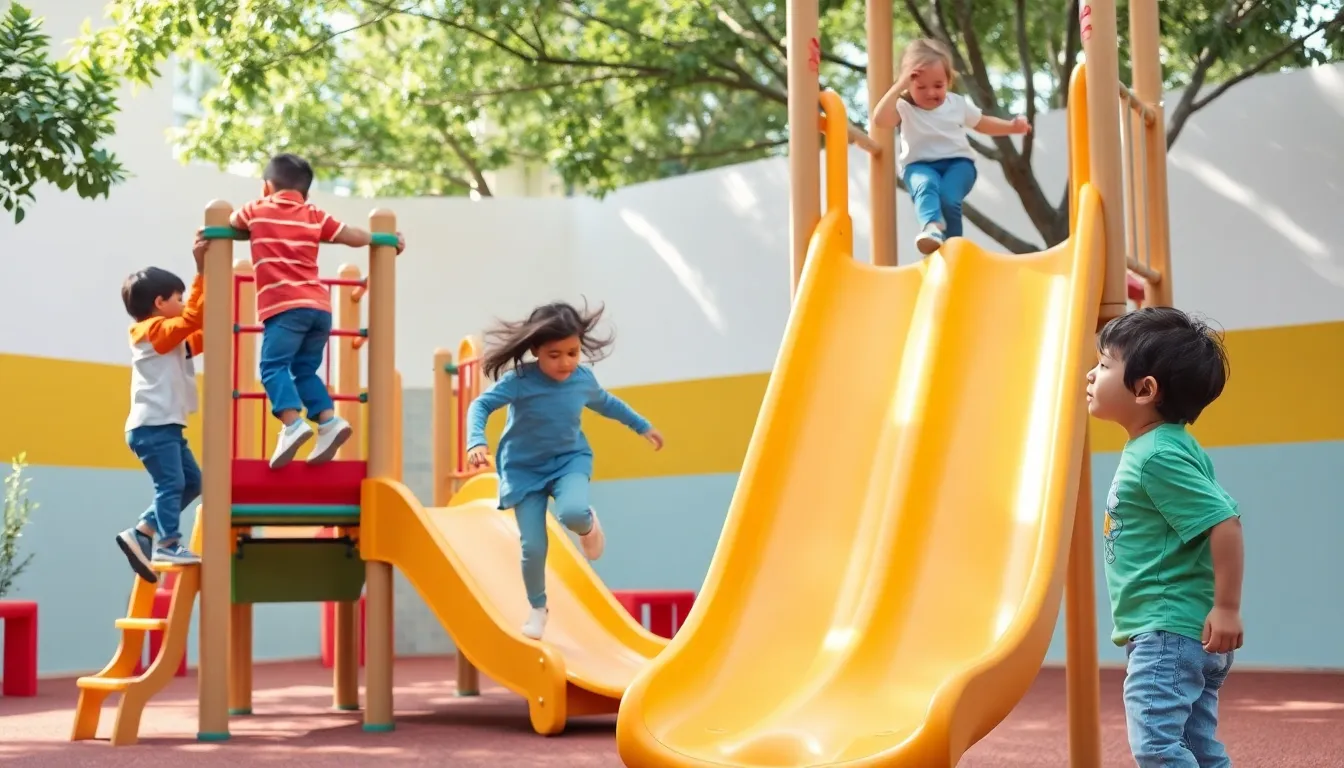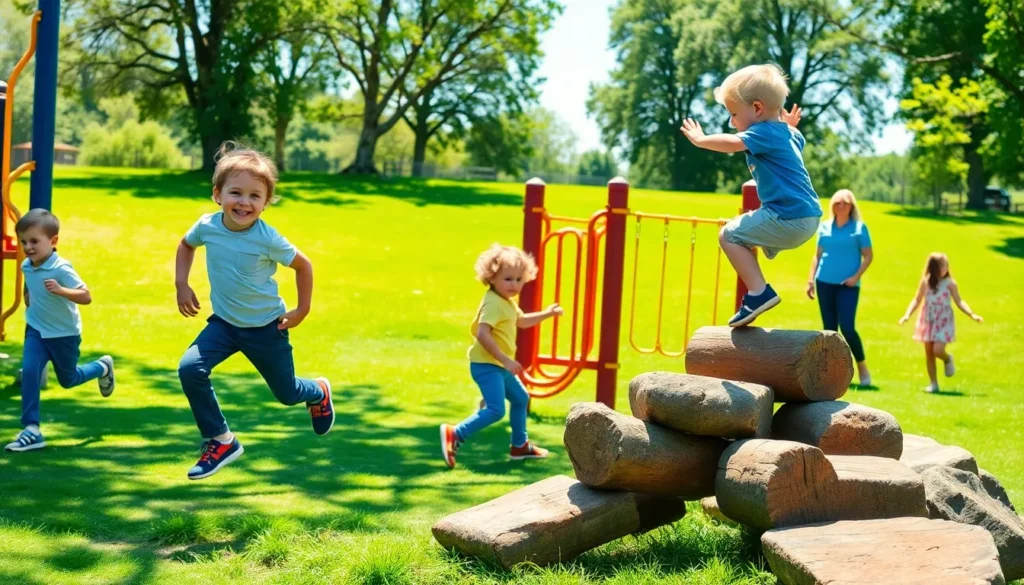Risky play in early childhood might sound like the start of a horror movie, but it’s more like an action-packed adventure. Parents often cringe at the thought of their little ones climbing trees or scaling playground equipment as if they’re auditioning for the next superhero flick. But, this kind of play is essential for healthy childhood development. Instead of worrying about scraped knees, it’s time to embrace the thrill and recognize the important lessons these experiences provide.
Table of Contents
ToggleUnderstanding Risky Play

Risky play involves activities that pose a challenge to children, often accompanied by some level of danger. Whether it’s climbing high or running fast, these movements help children test their limits and learn about their capabilities. It’s not about encouraging reckless behavior but rather fostering resilience and independence. According to experts, risky play is often defined by four key characteristics: height, speed, controlled experiences of the unknown, and powerful tools. This blend of excitement and uncertainty is where the magic happens.
Engaging in risky play allows children to navigate their fears and develop decision-making skills. Think about it: every time a child climbs to the top of the jungle gym, they’re not just reaching new heights: they’re also calculating risks and assessing outcomes. With each leap or climb, confidence grows, and invaluable life skills are honed.
Benefits of Risky Play
The benefits of risky play extend well beyond the thrill of the moment. Research shows that such experiences contribute significantly to various aspects of child development.
Physical Development
Engaging in risky play fosters physical skills such as balance, coordination, and strength. Activities like climbing or jumping enhance gross motor skills, which are crucial for overall physical health.
Emotional Resilience
Children learn to cope with fear and overcome anxiety through risky encounters. When they fall or stumble, they often get back up, resilience blooming in the process. This emotional fortitude serves them well beyond childhood.
Types of Risky Play
There are numerous forms of risky play, each offering unique challenges. Here are some popular types:
- Climbing: Be it trees or playground structures, climbing teaches kids about height, balance, and the thrill of reaching the top.
- Running: Children often push their speed limits, testing the waters of endurance and spatial awareness.
- Playing with fire: This may sound extreme, but supervised activities like fire-building teach essential skills about risk management.
- Using tools: Hammering, digging, or cutting engages fine motor skills while teaching children to respect tools and their potential hazards.
Creating Safe Environments for Risky Play
Safety doesn’t mean smothering adventurous spirits: it means creating environments where risky play can thrive without unnecessary danger. Here’s how:
- Supervision: Adults play an essential role in monitoring while allowing freedom for exploration.
- Natural Environments: Incorporating elements like logs, rocks, and hills encourages kids to explore varied terrains safely.
- Age-appropriate Challenges: Create spaces where children can engage with risks that match their developmental stage, ensuring they can safely push boundaries.
Balancing Risk and Safety
Striking a balance between encouraging risky play and ensuring safety can feel like walking a tightrope. It’s crucial to recognize that some risk is necessary for development. Here are key points to consider:
- Know the Child: Understanding a child’s capabilities helps in providing suitable challenges. Each child’s comfort level varies, and recognizing that makes a significant difference.
- Gradual Exposure: Begin with manageable risks and gradually introduce more challenging experiences as confidence grows.
- Open Communication: Talk to children about their experiences and feelings toward risk. This discussion can nurture their understanding of safe versus unsafe practices.
Supporting Children Through Risky Play
Supporting children during risky play isn’t about removing the risk but empowering them to navigate it. Here’s how caregivers and educators can help this:
- Encourage Exploration: Allow children to test their limits while providing guidance. Encourage them to try new things, emphasizing that it’s okay to fail.
- Celebrate Efforts: Whether they succeed or stumble, celebrating their courage fosters a positive attitude towards challenges.
- Teach Problem-solving: When kids face challenges during play, ask them open-ended questions that prompt them to think creatively about solutions.








